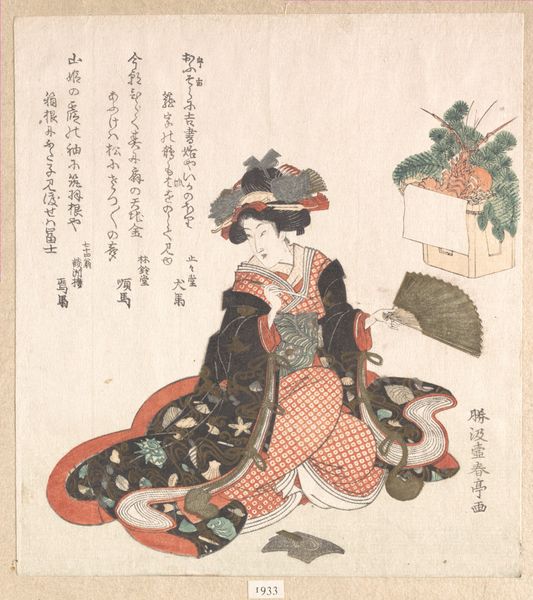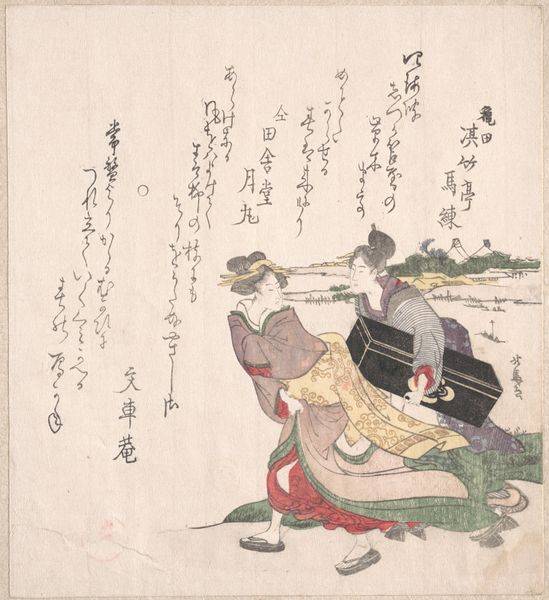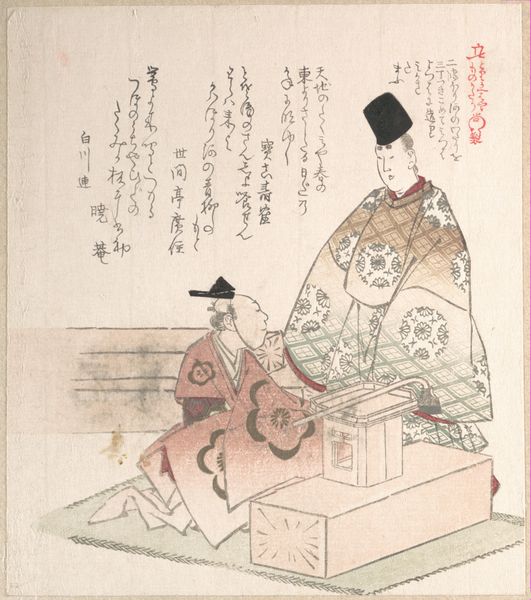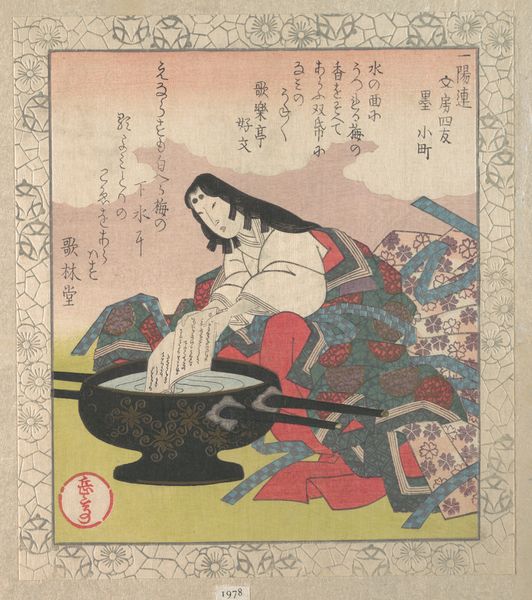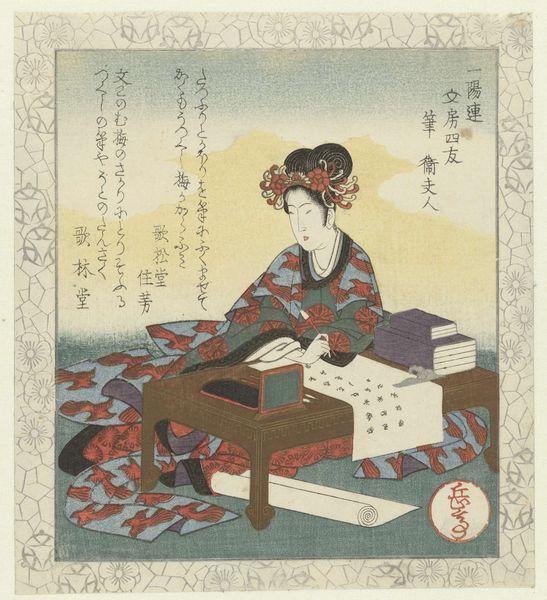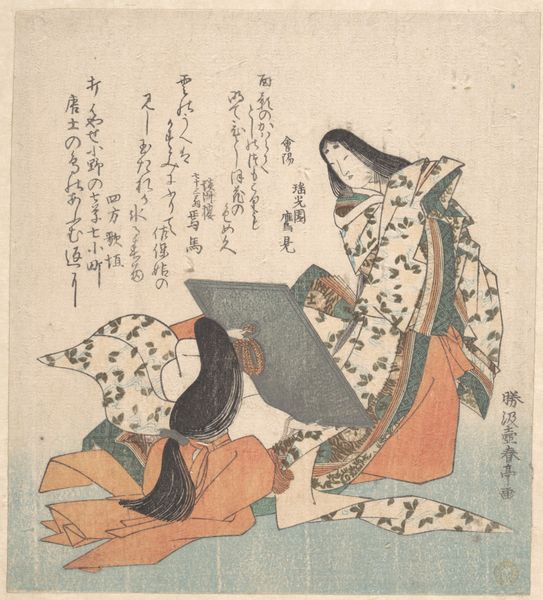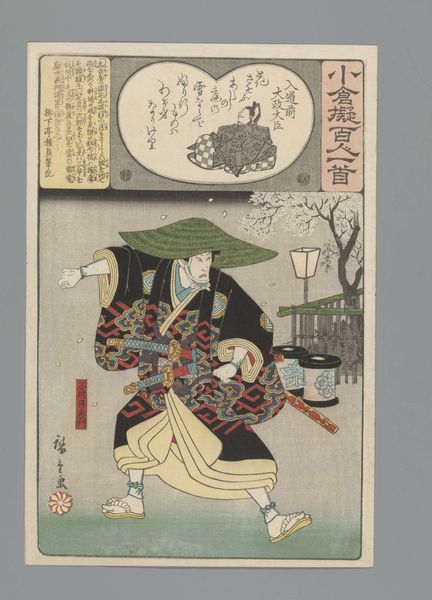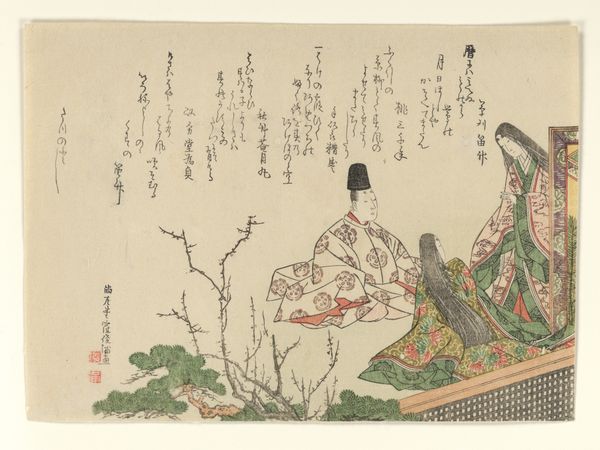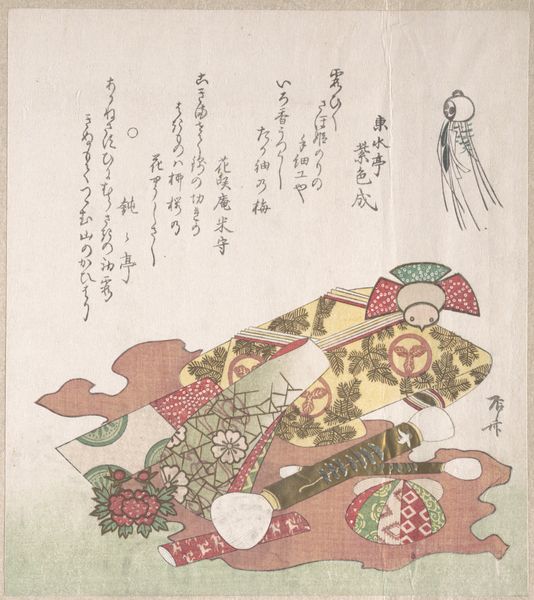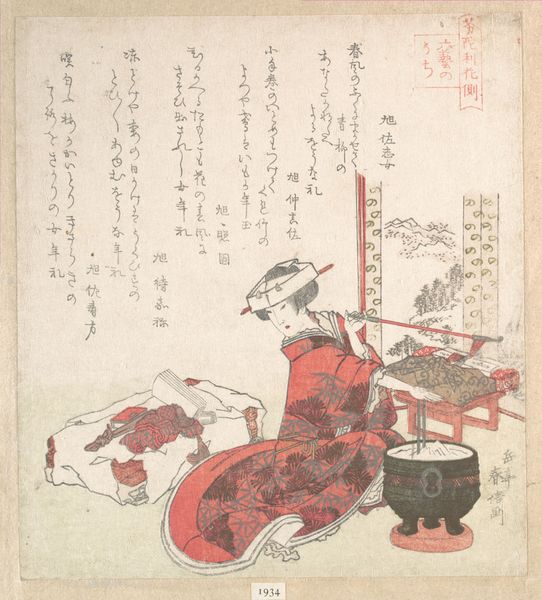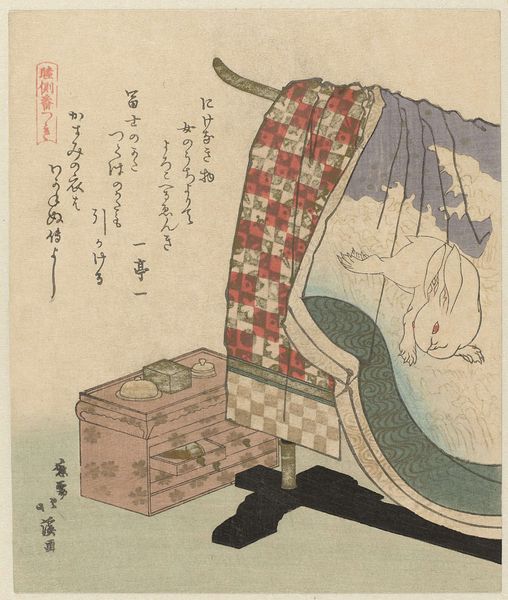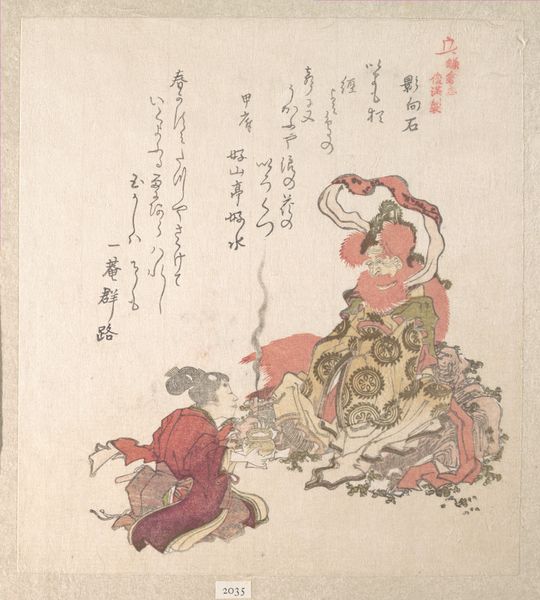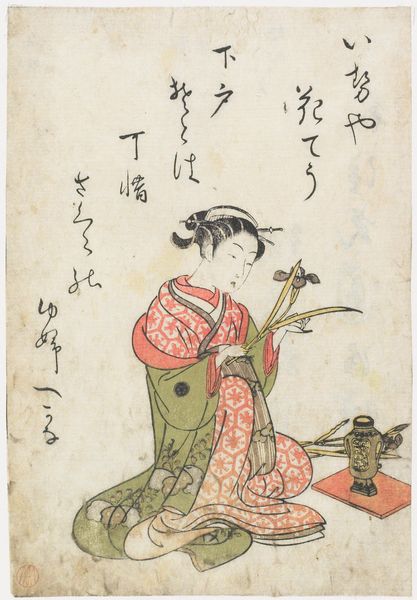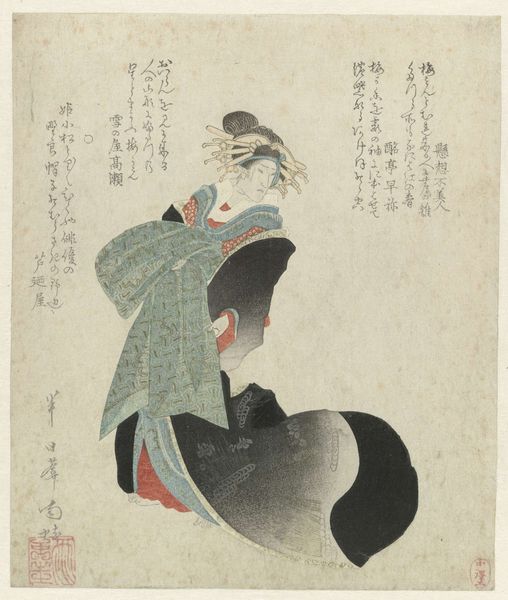
Two Ladies; One is Playing the Biwa (Japanese Lute) and the Other, the Koto (Japanese Harp) 1815
0:00
0:00
print, woodblock-print
# print
#
asian-art
#
ukiyo-e
#
figuration
#
woodblock-print
#
genre-painting
Dimensions: 8 x 7 1/8 in. (20.3 x 18.1 cm)
Copyright: Public Domain
Curator: Welcome! Today, we’re exploring an exquisite woodblock print by Kubo Shunman, titled “Two Ladies; One is Playing the Biwa (Japanese Lute) and the Other, the Koto (Japanese Harp)”. It dates back to around 1815, and what a delightful tableau it presents. Editor: It's quite captivating! My first impression is one of restrained elegance. The muted colors and delicate lines give it a peaceful, almost dreamlike quality. The asymmetrical composition, too, contributes to a dynamic visual experience, doesn't it? Curator: Absolutely. Shunman, as an Ukiyo-e artist, operated within very specific social and cultural frameworks. Works like this, depicting leisure and the arts, speak to the lives and refined tastes of the merchant class during the late Edo period. Notice the careful detail given to the women’s attire, indicating their social standing. Editor: Indeed! The intricate patterns and flowing lines in their kimonos show the mastery of Shunman’s printmaking. Look at how the artist uses lines to describe the musical instruments—the lute's elegant curves and the harp’s strings convey so much about their textures and materiality. There’s a tangible musicality visually suggested in the image. Curator: It's intriguing to consider how prints like these functioned. Beyond simple depictions of genre scenes, they circulated within a booming urban culture and often alluded to wider cultural trends, musical fashions, or even subtly referenced popular courtesans and theater stars. It also contains the tradition of text and imagery as being symbiotic. Editor: The characters scrawled along the left of the women show how script and image become a kind of visual poetics. Curator: Ultimately, artworks like this allowed citizens during a restrictive shogunate period some level of cultural refinement, so it became the cultural pulse of the time. Editor: I agree. Seeing it through the lens of color, texture and composition highlights both the beauty and complexity of Shunman’s work, doesn't it? Curator: Certainly! It reminds us of the intricate interplay of artistry and history, revealing societal trends while highlighting intimate glimpses of Edo period life. Editor: A harmonious blend indeed, bringing this quiet yet profound moment in time back to life.
Comments
No comments
Be the first to comment and join the conversation on the ultimate creative platform.
